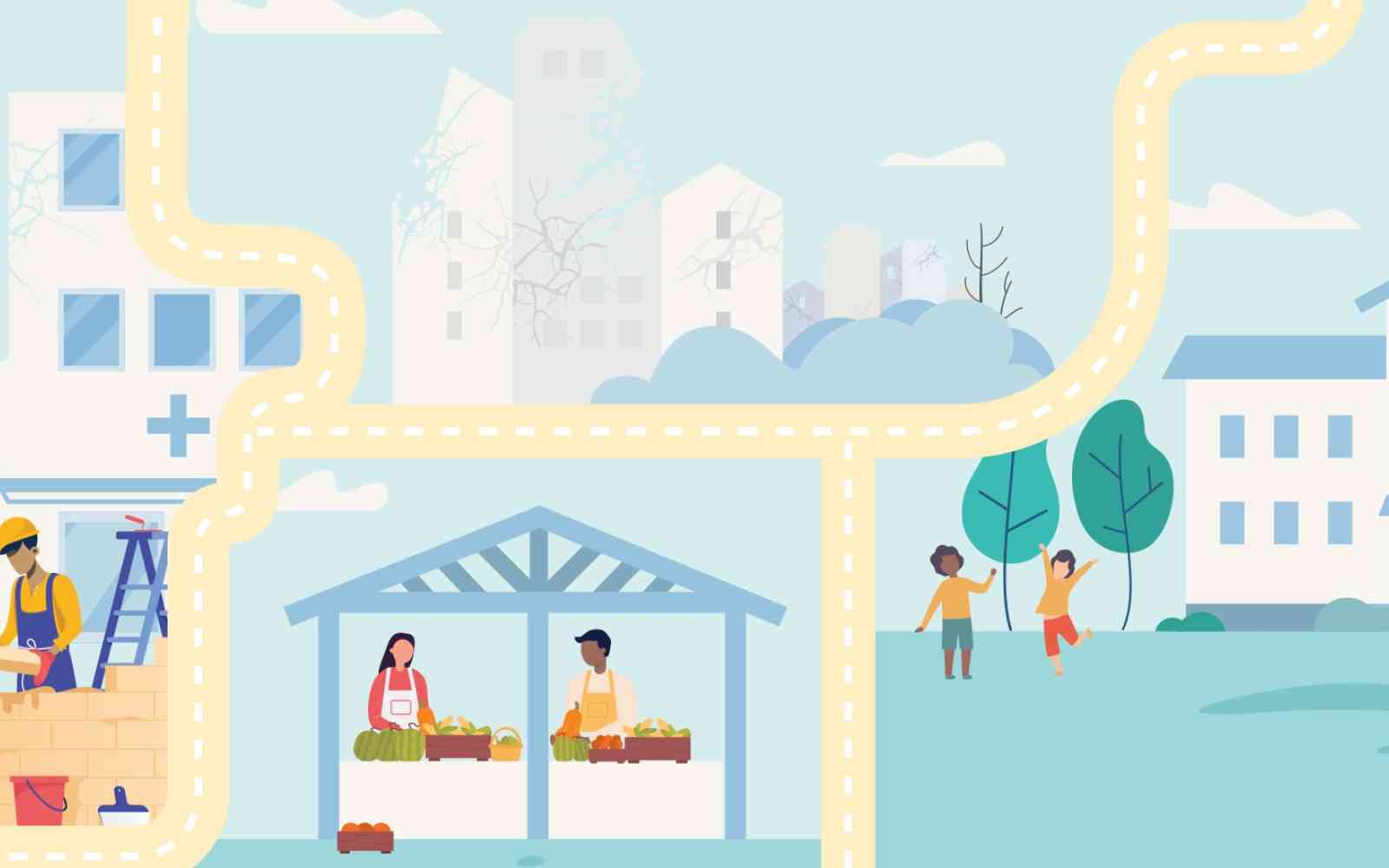The United Nations Office for Project Services (UNOPS)

Conflict, climate change and infrastructure
Climate change will affect communities least able to deal with its impact the most – and could fuel conflict in the process. Here's how infrastructure could help.
Around the world, people are vying for access to the same limited resources.
The numbers are staggering. About 2.2 billion people don't have access to safe drinking water while 4.2 billion people lack access to safe sanitation facilities.
In fragile and conflict-affected situations, lack of access to basic resources and services can often lead to tension – and that rising tension too often leads to conflicts.
Following a 22-year civil war, South Sudan's Lakes State is one of the poorest and most conflict-affected areas of the country. Water scarcity and a lack of access to safe water sources – especially during the dry season – has fueled inter-communal conflict between pastoral communities.
Climate change, with its more extreme weather patterns – including more severe and prolonged droughts – won't help these kinds of situations. It will likely increase tension between groups fighting for the same limited resource – in this case, water.
And in communities where people depend on agricultural products as their main source of income, a prolonged drought seriously threatens their livelihoods. Living in a fragile or conflict-affected situation makes it even more difficult to recover from crops failing and livestock dying.
Driven by lack of food, water and economic opportunities, people who are already struggling may fight over what few resources or services are left.
This isn't something that could happen in the distant future. Climate change is already affecting our world – and millions of people could become even more exposed to its negative impact.
If the world doesn't work to mitigate and adapt to the impact of climate change now, more than 100 million people could be pushed into extreme poverty by 2030. And approximately two-thirds of people living in extreme poverty will be in fragile and conflict-affected areas.
Resilient, sustainable and inclusive infrastructure could help these communities withstand the shocks and stresses brought on by climate change – and assist them in recovering and thriving.
When implemented with a holistic approach in mind, infrastructure can increase access to limited resources – in particular, natural resources under pressure from climate change.
And it can help protect the people who are the most vulnerable to the impact of climate change while also preventing tensions from erupting into a full-scale conflict. In a post-conflict setting, infrastructure can also help communities rebuild in the long term, reduce inequalities and foster sustainable development.
For example, restoring water infrastructure in conflict-affected areas means health, education, sanitation and other critical services can resume.
In South Sudan's Lakes State, UNOPS helped increase access to water resources by constructing water reservoirs for cattle and boreholes so that people could get water fit for human consumption.
By working closely with engineers from Lakes State's Ministry of Physical Infrastructure and training local workers in construction methods and water facility management, the infrastructure can continue to be maintained locally.
Part of a wider peacebuilding project, police stations and courts were also constructed in conflict-prone areas. Where possible, people from local communities were hired to carry out the construction works – including ex-combatants.
This project not only helped provide infrastructure that supported immediate needs for access to a limited natural resource, it also encouraged security and rule of law, provided economic opportunities for the local community, and ensured a transfer of skills to keep the infrastructure running.
By going beyond just restoring infrastructure to making infrastructure more resilient means critical services can continue – even in the face of climate change.
Carolina Fantini and Geoffrey Morgan
Carolina Fantini is an Infrastructure and Project Management Associate at UNOPS, where she promotes the role infrastructure plays in supporting development and peacebuilding. With a background in international relations and security studies, she has worked in Africa, Europe and Latin America.
Geoffrey Morgan is the Team Lead for Sustainable, Resilient and Inclusive Infrastructure with UNOPS Strategic Initiatives team. He works to support governments with meeting their climate and development goals by utilizing sustainable, resilient and inclusive infrastructure. He is a chartered civil engineer and has experience working on projects in Africa, Asia, the Middle East and Latin America.















